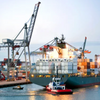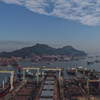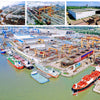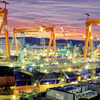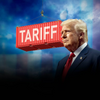US-China Trade War October 2025: Impact on Shipbuilding & Why China Shipbuilding Remains a Smart Buy
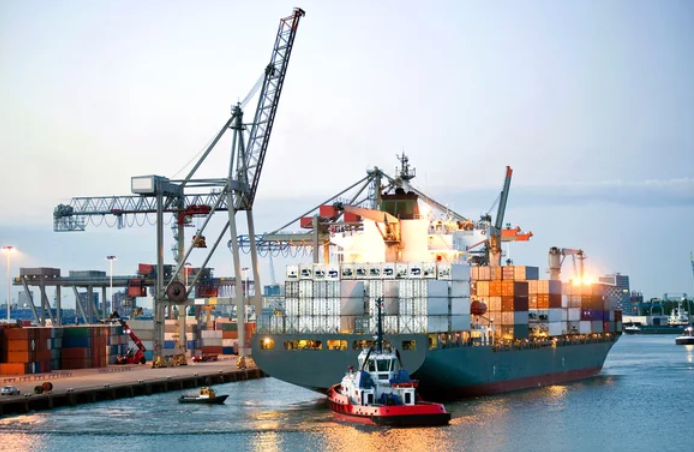
The U.S.-China trade tensions escalated sharply in October 2025 when the Office of the U.S. Trade Representative (USTR) formally implemented Section 301 measures targeting China’s maritime and shipbuilding sectors. These restrictive policies have sent ripples across the global shipping industry, yet China’s shipbuilding sector retains compelling advantages for international buyers.
I. October 2025 Trade War: Key Measures Reshaping the Shipbuilding Landscape
a. U.S. Policy: Section 301-Driven Restrictions
On October 14, 2025, USTR activated its long-anticipated punitive measures, marking a significant escalation in trade frictions affecting maritime industries. The policy framework, developed following a year-long Section 301 investigation, introduces tiered fees and restrictions with far-reaching consequences:
-
Punitive Port Fees for Chinese Vessels
The core of the U.S. action lies in escalating fees targeting three vessel categories, with costs set to rise steadily through 2028:
-
Chinese-owned/operated vessels: Starting at $50 per net ton (October 2025), increasing to $140 per net ton by April 2028, capped at five charges per vessel annually .
-
Chinese-built ships: Fees calculated by either net tonnage (starting at $18/ton) or container count (starting at $120/container), whichever is higher . A Panamax container ship (70,000 net tons) could face initial fees exceeding $1.26 million per U.S. port call.
-
Foreign-built car carriers: Levied at $150 per Car Equivalent Unit (CEU), with no annual cap .
-
LNG Shipping Restrictions and Supply Chain Shifts
LNG tankers face distinct curbs: from 2028, an increasing percentage of U.S. LNG exports must be carried on U.S.-built vessels, diverging from the global norm where 80% of such ships are Asian-built . This comes as the IEA projects 2026 will see the largest LNG supply growth since 2019, creating market friction .

b. China’s Countermeasures: Reciprocity & Industrial Protection
China responded swiftly on October 14, 2025, framing actions as "legitimate defense" against U.S. unilateralism . Led by the Ministry of Transport (MOT) and Ministry of Commerce (MOFCOM), measures include:
-
Reciprocal Special Port FeesThe MOT’s Implementation Measures for Collecting Special Port Fees on U.S.-Related Vessels imposes fees on five vessel categories, with phased hikes:
-
Coverage: U.S.-owned/operated ships, vessels with ≥25% U.S. equity, U.S.-flagged ships, and U.S.-built ships .
-
Rates: RMB 400/ton (2025) rising to RMB 1,120/ton (2028), capped at 5 calls annually . A 100,000-net-ton U.S.-flagged bulk carrier faces initial fees of ~$5.5 million per Chinese port call.
-
Exemptions: Chinese-built ships owned by U.S. entities, empty vessels entering for repairs, and humanitarian ships .
-
Regulatory & Legal Safeguards
-
MOFCOM placed five U.S. subsidiaries of Hanwha Ocean on a countermeasure list for aiding the U.S. investigation .
-
China launched WTO litigation alleging U.S. violations of non-discrimination rules and the China-U.S. Maritime Transport Agreement .
-
The MOT is investigating U.S. measures’ impact on China’s maritime supply chain security .
II. Why Buying Chinese-Built Ships Remains Strategic in 2025
Despite trade headwinds, China’s shipbuilding sector maintains structural advantages that continue to attract global buyers. Backed by market data and industry recognition, these strengths outweigh short-term trade frictions:

1. Unrivaled Market Dominance & Delivery Reliability
-
As of Q3 2025, Chinese yards hold 64.2% of the global order book (100.86 million CGT) and secured 40% of September’s new orders .
-
Clarkson Research projects 2025 global shipbuilding output will reach 74.1 million GT, with China contributing ~60% .
-
Delivery timelines (20–24 months for large container ships outpace U.S. capacity, which accounted for just 0.01% of 2024 global output .
2. Green Technology Leadership Aligned with IMO Goals
China dominates clean shipping innovation, critical for complying with IMO’s 2050 net-zero mandate:
-
76% of 2024 global clean-tech manufacturing investment flowed to China, fueling breakthroughs in alternative fuels and efficiency .
-
The 174,000 cubic meter LNG carrier built by Hudong-Zhonghua reduces fuel consumption by 50% and cuts boil-off rate by 50% compared with similar products worldwide.
-
Chinese yards lead in methanol/ammonia-powered vessels: Hudong-Zhonghua proposed $207 million for a 21,000TEU dual-fuel container ship 15% below Korean quotes .
-
Proven retrofits (air lubrication, waste heat recovery) are standard on Chinese builds, reducing fuel use by 5–14% .
3. Irreplicable Cost Competitiveness
Price advantages persist even after accounting for U.S. port fees:
-
U.S. shipyards charge 6x more than Chinese yards for equivalent vessels (e.g., $125 million vs. $36.5 million for an MR product tanker .
-
For LNG dual-fuel container ships, Chinese bids undercut Korean rivals by $20–43 million per vessel, as seen in Maersk’s 12-ship tender .
-
Scale effects (56 shipyards with 100,000+ DWT capacity) and 80% domestic component localization drive cost efficiency .
4. Trusted Partnerships with Global Leaders
-
Maersk is negotiating a $2.5–2.8 billion order for 12 LNG-fueled container ships, citing China’s "price competitiveness and delivery reliability" .
-
Greek shipowners (21% of Q3 2025 orders) favor Chinese yards for feeder container ships .
-
Qatar Energy awarded China a $72 billion contract for 24 LNG carriers—testament to technical credibility .

III. Navigating Uncertainty: Long-Term Outlook for China Shipbuilding
The October 2025 trade measures create short-term volatility but fail to address the fundamental drivers of China’s shipbuilding dominance: technological leadership, capacity scale, and alignment with green transition goals. Clarkson predicts China’s market share will remain above 55% through 2030, as global demand for decarbonized vessels surges .
For buyers, the strategic case for Chinese ships is clear: access to cutting-edge green technology, reliable delivery, and cost efficiency—offsetting trade-related costs through global route flexibility. As Jonathan Gold of the NRF warns, U.S. policies "punish consumers but won’t revive American shipbuilding," leaving China as the pragmatic choice for global operators .
In an era defined by decarbonization and supply chain resilience, China’s shipbuilding sector isn’t just a competitive option—it’s a necessity for forward-looking maritime companies.
